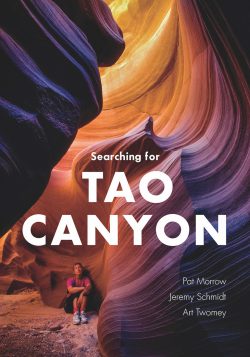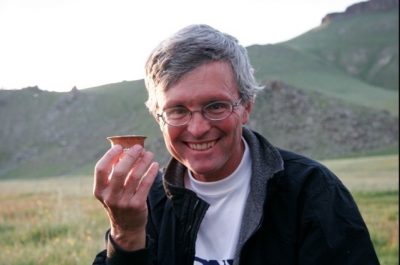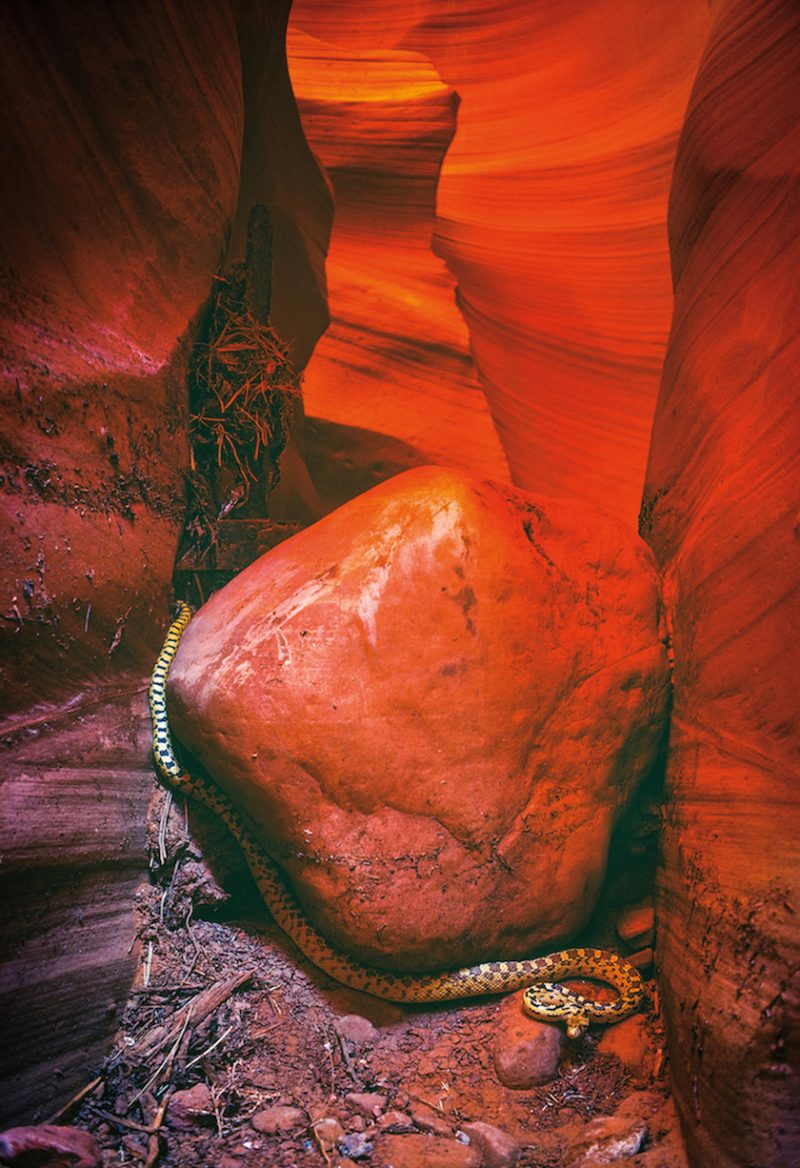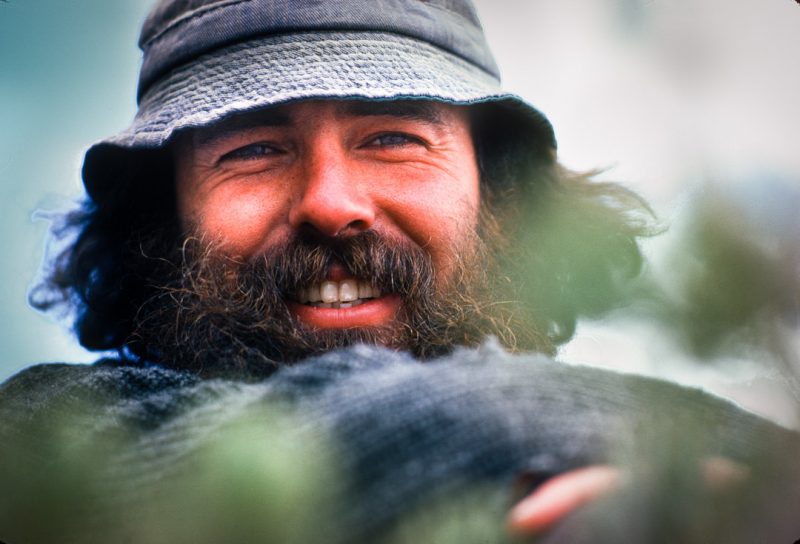#331 Slot canyons for Twomey
Searching for Tao Canyon
by Pat Morrow, Jeremy Schmidt, Art Twomey
Victoria: Rocky Mountain Books, 2018
$30.00 / 9781771602587
Reviewed by Ron Dart
First published June 29, 2018
*
 The Canadian-American duo of Pat Morrow and Jeremy Schmidt, authors of the acclaimed Himalayan Passage: Seven Months in the High Country of Tibet, Nepal, China, India, and Pakistan (Mountaineers Books, 1991) has struck again with Searching for Tao Canyon from Victoria’s Rocky Mountain Books.
The Canadian-American duo of Pat Morrow and Jeremy Schmidt, authors of the acclaimed Himalayan Passage: Seven Months in the High Country of Tibet, Nepal, China, India, and Pakistan (Mountaineers Books, 1991) has struck again with Searching for Tao Canyon from Victoria’s Rocky Mountain Books.
Born in Invermere in 1952 and raised in Kimberley, Morrow is a mountaineer, author, photographer, and the second Canadian to climb Mt. Everest (1982). He was also the first person to climb the highest peaks on all seven continents, as described in his Beyond Everest: Quest For the Seven Summits (Camden House, 1986). In 1987 he received the Order of Canada.
Wildlife biologist and outdoor writer Jeremy Schmidt has written extensively about the American west and southwest. He is known for his National Geographic road guides to Yellowstone, Grand Teton, and Yosemite parks.
Art Twomey, the third contributor to Searching for Tao Canyon, was a glacial geologist, mountaineering legend, and contributor to Anne Edwards’ Exploring the Purcell Wilderness (Douglas & McIntyre, 1978). Twomey died in a helicopter crash in the Purcell Mountains in 1997.
On his website, Schmidt describes the book’s genesis:
More than 40 years ago, Art Twomey, Pat Morrow and I started a decades-long exploration of slot canyons in the southwest. We had a photographic adventure book in mind, and came close to publishing it several times in various forms with different publishers but never quite got it done. The loss of Art 20 years ago took the wind out of things. Now, finally, we have brought it to completion….What a pleasure it is to bring this long-nurtured baby into the light!
Reviewer Ron Dart found it “impossible to put this page-turner of a book down. Each lavish image is a portal into the mysterious and overlooked secrets of rocks, rivers, weather, and wildness.” – Ed.
*
The idea of wilderness needs no defence, it only needs defenders. — Edward Abbey.

My wife Karin and I have spent some challenging moments in the slot canyons of the American southwest, wading through water knee- and waist-deep to reach dry ground and ledges, ever wary of flash floods, and always aware of the sunlight overhead searching for and teasing out varied hues from the surrounding rock. So it came as a sheer delight when Searching for Tao Canyon came my way to review.
It should be noted, at the outset, that this sumptuous book with exquisite photographs is, in many ways, a much delayed and necessary homage to the pioneering work of the late Art Twomey, the East Kootenay mountaineering legend and conservationist.
Searching for Tao Canyon is as much about a more meaningful way to live as it is about slot canyons and photographing their compelling and time-shaped beauty.
The bookends of this most tantalizingly beautiful book describe and discuss the origins of slot canyon treks and the many challenges faced in reaching and photographing such sacred sites and some of those on such trips.
The fast-moving text by Jeremy Schmidt includes this recollection of his slot canyon explorations with Morrow and Twomey:

We felt free, and we were, and we had the canyons to ourselves. We rarely encountered anyone else in them and came to think of slot canyons as our personal secret gardens. We spent days, even weeks, in the best ones. With tripods set, we watched shadows move, and shapes shift as the sun arced through the unseen sky above. We hung from ropes, wedged ourselves into narrows hardly wide enough for a tennis shoe, or perched in little waterworn rooms high above the canyon floor, their walls carved round like the inside of a cured squash.
Needless to say, the text is worth many a meditative read for a background into the rather new wilderness trekking in slot canyons of “fun-hogs,” a term that should not be understood in a silly or narcissistic manner. Many of the best “fun-hogs” have been at the forefront of conservation, preservation, and wilderness and wildness efforts.
The textual part of Searching for Tao Canyon is a primer to the photographs of types and varieties of slot canyons. Their colours, shapes, and sizes will hold the curious for minutes or hours of wonderment. Every image is an opening into these places of rare, hidden, or inaccessible natural beauty.

Sensibly, the authors decided not to name or note most of the sites where the photographs were taken. Tourists have predictable ways of destroying, in time, the very wildness they seek when free of their “cabin’d, cribb’d and confin’d” urban existence, as Macbeth put it.
The language of Tao was appropriately chosen as the title for this welcome masterpiece, the Tao being the metaphor for the way and “that which is.” The search for the Tao is as much about being still, not searching, and remaining quiet for long enough to see what is not often seen. But such an approach also involves work to get to places where the hidden becomes revealed to the ardent and committed searcher and seeker.
Both the written text and generous photographs illuminate such realities again and again. I found it impossible to put this page-turner of a book down. Each lavish image is a portal into the mysterious and overlooked secrets of rocks, rivers, weather, and wildness.

Every image can hold an attentive reader for moments of rapt invitational insight. Photographs of rappelling down into narrow canyon depths, of mixed light playing off rocks, of animals that dwell in such confines; images of climbers straddling narrow ledges, of night skies and brilliant blue skies above, of waterfalls and naked dives, of showers and meals of simple food in canyons tell compelling visual tales.
Searching for Tao Canyon is divided into five sections: “Dedication to Art Twomey,” “Preface: Heads Up, Fellow Desert Rats,” “In the Jaw of the Dragon,” “Tao Canyon,” and “Epilogue.”
All five chapters are short, accessible, and nicely-shaped. They beckon the reader to explore and learn more about these slot canyon grails that offer such superb environments for fine photography. Searching for Tao Canyon closes with two short pages with lists of “Books We Like” and “Environmental Organizations,” mere entrees but well worth the primer.
In the last decade or more, canyoneering and slot canyon trekking have become more prominent. Searching for Tao Canyon offers an informed, insightful, respectful, and engaged pathway into how to seek, in a sustainable way, the elusive Tao that remains hidden in slot canyons — and to search for the treasured canyons of the soul and life itself.
Searching for Tao Canyon is one of those rare books that will remain near and dear, at least to this reader. I recommend it as a must-buy for soul and sanity.

*
Ron Dart has taught in the Department of Political Science, Philosophy, and Religious Studies at University of the Fraser Valley since 1990. He was on staff with Amnesty International in the 1980s. Ron has published more than 35 books, his most recent being Erasmus: Wild Bird (Create Space, 2017) and The North American High Tory Tradition (American Anglican Press, 2016).
*
The Ormsby Review. More Books. More Reviews. More Often.
Publisher and Editor: Richard Mackie
The Ormsby Review is a journal service for in-depth coverage of BC books and authors. The Advisory Board consists of Jean Barman, Wade Davis, Robin Fisher, Cole Harris, Hugh Johnston, Kathy Mezei, Patricia Roy, Maria Tippett, and Graeme Wynn. Scholarly Patron: SFU Graduate Liberal Studies. Honorary Patron: Yosef Wosk. Provincial Government Patron since September 2018: Creative BC
“Only connect.” – E.M. Forster

One comment on “#331 Slot canyons for Twomey”
Comments are closed.